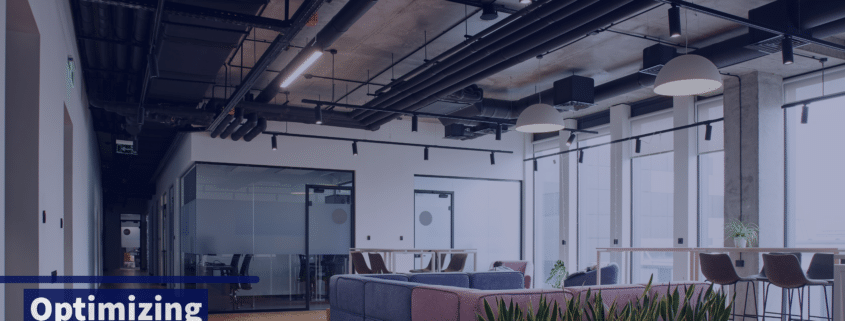Optimizing Workspace Design for Multi-Generational Professionals: Insights & Solutions for South African Businesses
We’ve witnessed a dynamic shift in the way we work over the last decade. As technology evolves and generational needs change, so do workspaces. From the rise of co-working spaces and shared workstations to the necessity of virtual platforms, employers must cater to every generation. By using HR solutions we have come up with a successful way to achieve the perfect multi-generational workspace designs.
Understanding Generational Needs.
The modern-day workspace houses a blend of Baby Boomers, Generation X, Millennials, and Generation Z. Each has unique needs:
Baby Boomers (born 1946-1964).
Appreciate personal spaces but are adapting to open offices. They value face-to-face meetings and tend to lean towards traditional forms of communication.
Generation X (born 1965-1980).
Prefer a mix of private areas and collaborative spaces. They’re tech-savvy but also appreciate offline engagements.
Millennials (born 1981-1996).
Enjoy flexible, tech-driven environments. They’re comfortable with open spaces, virtual meetings, and remote work.
Generation Z (born 1997-2012).
Digital natives who desire innovation in their workspace. They’re adaptable, with a focus on both virtual and physical collaborative platforms.
Physical Workspace Designs – Catering to Multi-Generational Needs
Designing a workspace that meets the requirements of every generation is a challenge. But, understanding the diverse needs and preferences can help strike the right balance. Let’s delve into how each generation’s unique needs can be met in the physical workspace.
Collaborative Spaces.
These are open areas furnished with comfortable seating, state-of-the-art whiteboards, and the latest tech facilities. They are places that encourage brainstorming, spontaneous discussions, and teamwork.
Millennials and Gen Z.
For these younger generations, collaboration is second nature. They thrive in settings where they can engage in group discussions, share ideas freely, and work on projects collectively. Modern touches like smart screens for presentations or lounging areas for informal brainstorming can be particularly appealing.
Baby Boomers and Gen X.
While Boomers may have started their careers in more private settings, many appreciate and have adapted to the energy of open spaces. However, ensuring that these spaces also offer some traditional communication tools, such as landline phones or physical bulletin boards, can be a thoughtful touch. For Gen X, these spaces can serve dual purposes. By day, they might be places of collaboration, and in the evening, they might transform into spaces for seminars or continued learning workshops, aligning with their penchant for offline engagements.
Private Work Areas.
While open spaces are valuable, they aren’t suitable for every task or individual. There’s still a significant need for cubicles, private rooms, or separate cabins, especially for tasks requiring deep concentration or confidentiality.
Gen X and Baby Boomers.
They often find themselves in roles that require handling sensitive information or critical tasks. Having an option to retreat to a quiet, personal space is essential. For Boomers, who started their careers in an era where personal cabins were the norm, these spaces might evoke a sense of familiarity. For Gen X, these spaces represent a blend of tradition and modernity. They might prefer cabins with modern amenities but also want the option to have a physical door they can close for privacy.
Millennials and Gen Z.
While they are adaptable to open spaces, it’s essential to acknowledge that they too, at times, need privacy, especially when dealing with personal client calls or when they crave a break from the usual hustle and bustle. Offering modular spaces, which can be open at times and private when needed, can be an innovative solution.
Recreational Zones.
In today’s fast-paced corporate environment, taking breaks is not just a luxury. Recreational zones are areas where employees can relax, perhaps read a book, play a quick game, or even indulge in some mindfulness exercises.
Baby Boomers.
A space with comfortable chairs, some classic board games, or even a selection of magazines and newspapers can be inviting.
Generation X:
Considering their tech-savvy nature, perhaps a corner with a music system or even a TV screen for short documentaries or news can be enticing.
Millennials and Gen Z:
These zones can be equipped with modern gaming consoles, bean bags, or even a DIY coffee bar. Interactive elements, like a wall where they can scribble ideas or a tech bar with the latest gadgets, can also be an exciting addition.
In the evolving landscape of corporate culture, recognizing and valuing the generational differences can truly set a company apart. A harmonious blend of traditional and contemporary design elements doesn’t just enhance the aesthetic appeal but also significantly impacts employee morale, productivity, and overall well-being. By fostering an environment that resonates with every age group, businesses not only showcase their commitment to their workforce but also position themselves as forward-thinking entities. As the lines between work and leisure continue to blur, crafting a workspace that truly feels like a ‘second home’ for every generation is not just a design challenge, but a testament to inclusivity, adaptability, and future-readiness.
Adapting to South Africa’s Dynamic Professional Landscape
To foster a thriving work environment, employers need to acknowledge and cater to the diverse needs of their workforce. Whether it’s providing state-of-the-art tech solutions or ensuring there’s a quiet corner for focused work, a one-size-fits-all approach no longer cuts it.
With South Africa’s vibrant cultural tapestry and a dynamic mix of young and seasoned professionals, businesses must be at the forefront of workspace evolution. Looking to build an adaptable team suited for such diverse work environments? Trust MASA, South Africa’s leading name in staffing solutions, to find the perfect fit for your organisational needs.



